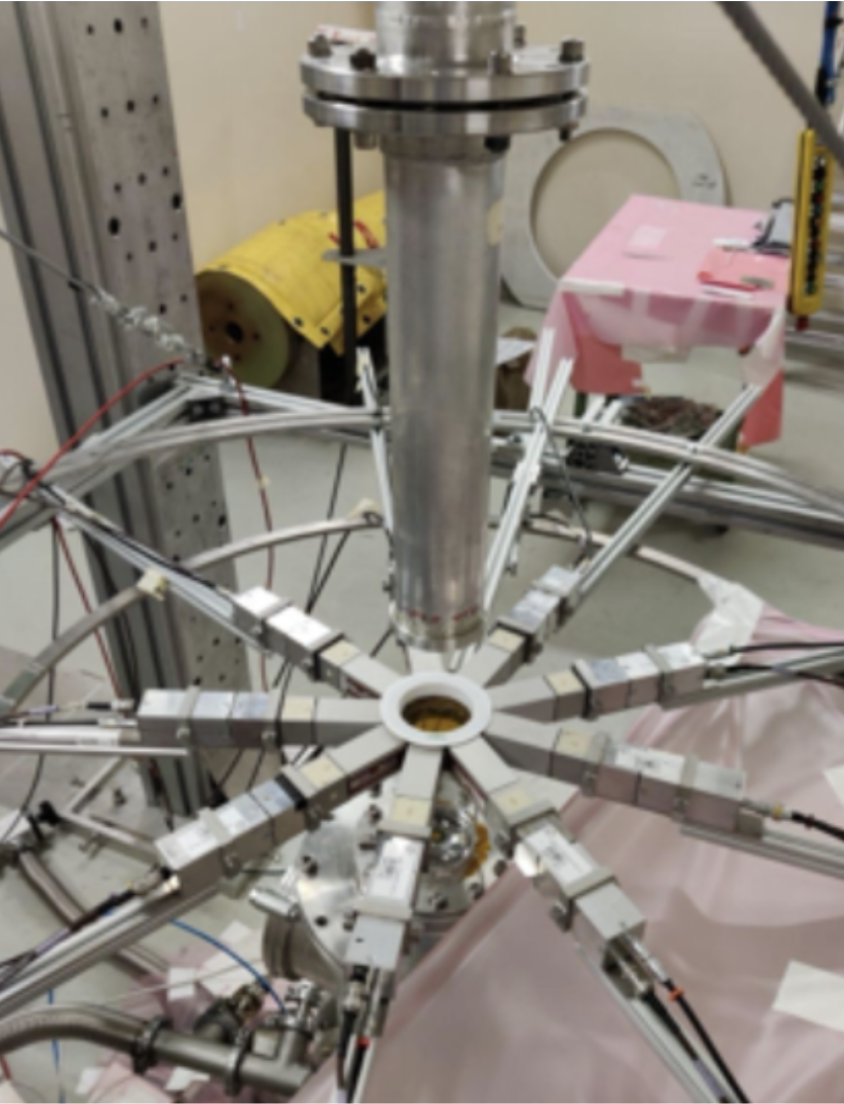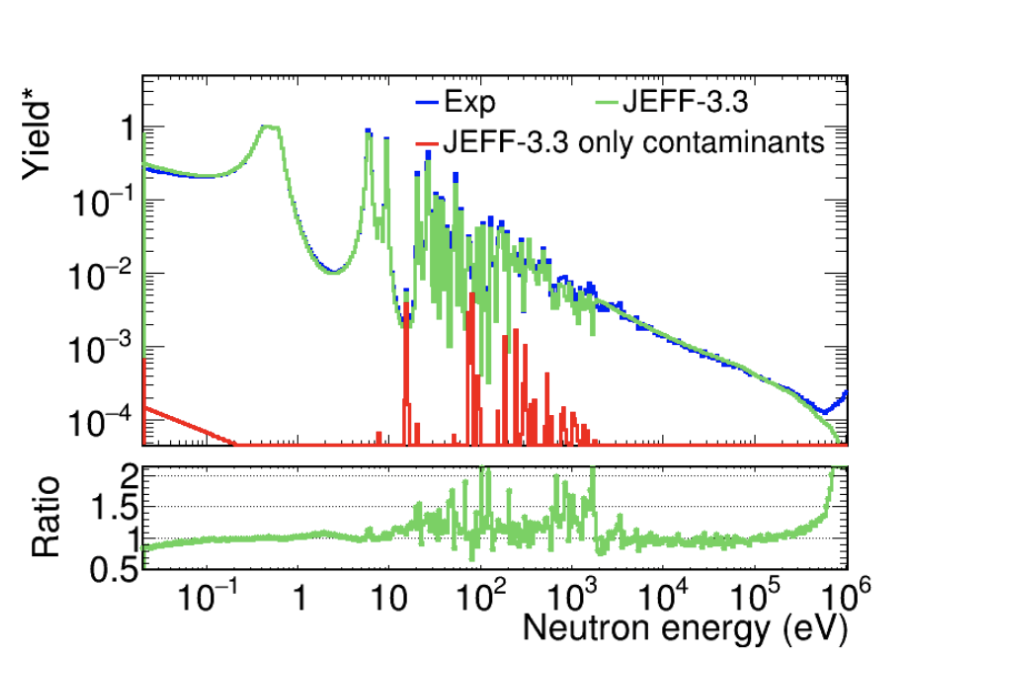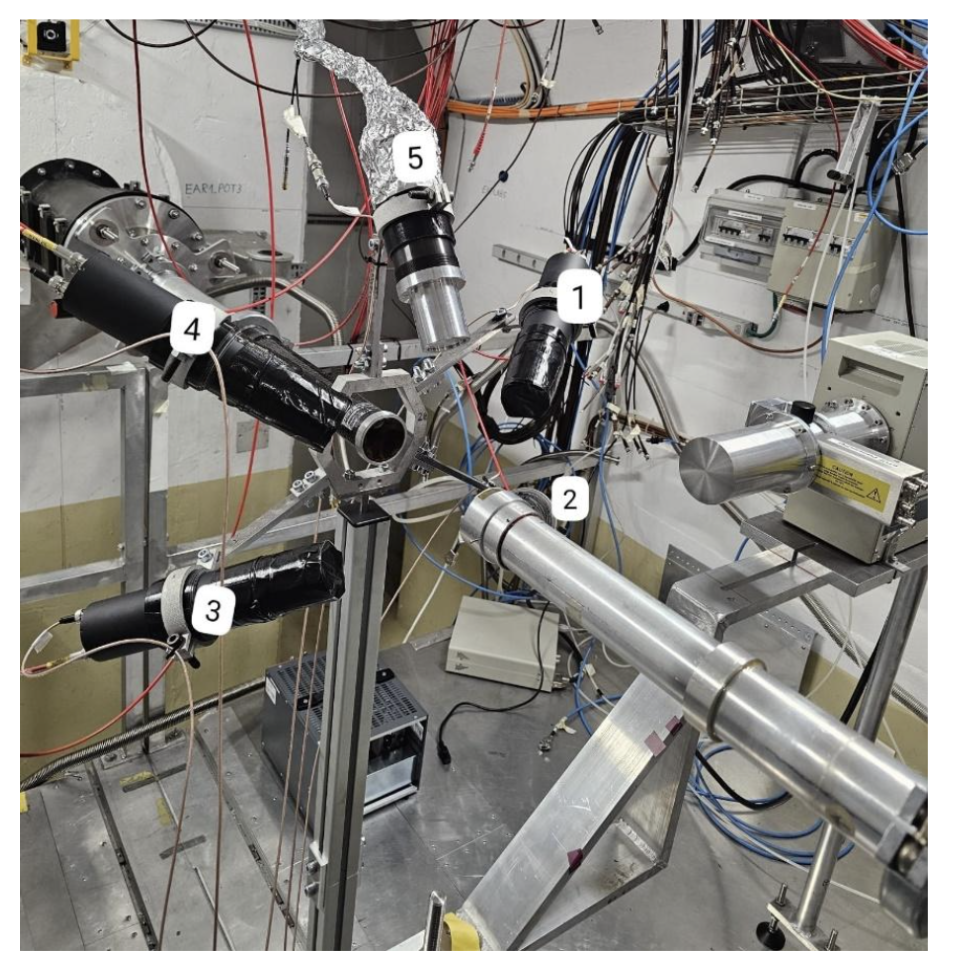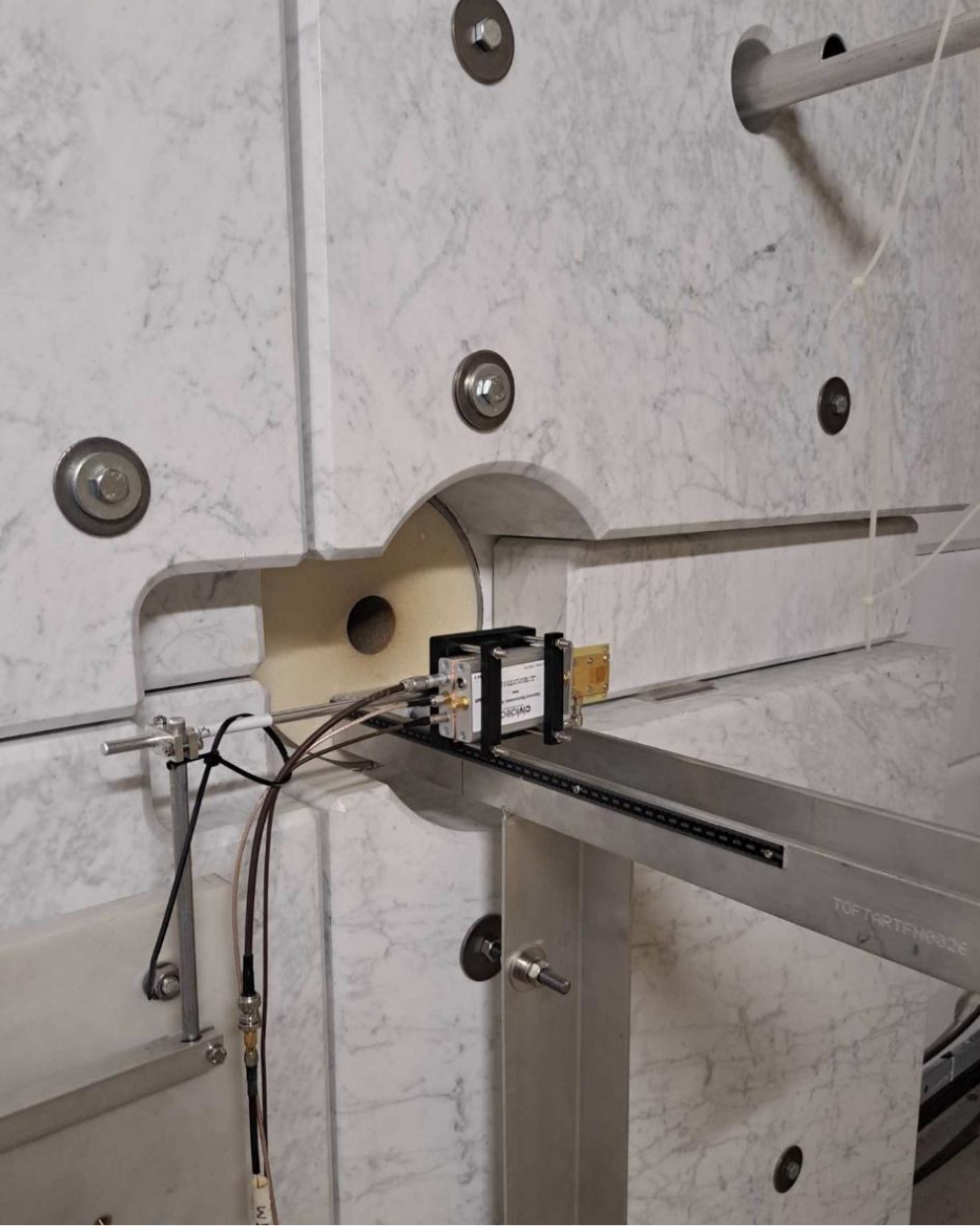The 2024 n_TOF run: Highlights and perspectives

Thanks to the excellent beam conditions provided by the PS staff, combined with the efficiency of research groups participating in the n_TOF Collaboration, an intense experimental program has been performed during the 252 days of measurements of the 2024 data-taking campaign at n_TOF. The facility will approach 2026 its 25th year of operation. In its long successful history, 2024 laid the foundation for the study of neutron-induced reaction channels and samples that it was not possible to investigate in the past. In fact, up to now, the n_TOF core business resided in neutron capture measurements of interest for nuclear astrophysics and neutron-induced fission, mainly of interest for innovative and advanced nuclear technology.
Now, relevant detector R&D activities opened the possibility to investigate neutron inelastic scattering with the production of light-charged particles (Z=1,2) in the exit channel, with several applications to space technology and fusion reactors. In addition, this year a gaseous target has been used for the first time at n_TOF. The 40Ar(n, γ) reaction has been studied [1], thanks to in-house development of a gas cell that can resist pressures of hundreds of bars. Many gas samples have then been added to the list of future challenging measurements that can and will be performed at n_TOF in the coming years. Finally, tests and engineering studies have been conducted to set up a transmission station in the neutron beam line leading to Experimental Area 1 (EAR1). In the next years, this reaction channel will enrich the family of neutron induced cross-section studies feasible at n_TOF.
During 2024, 17 different isotopes have been investigated at n_TOF. Of these, 9 experiments were dedicated to neutron capture, 1 to neutron-induced fission, 2 to inelastic scattering, and 2 to the production of light-charged particles.
Amongst the neutron capture measurements, the study performed in Experimental Area 2 (EAR2) on the extremely radioactive (83 days of half-life) 88Zr [2] can be highlighted. A record small amount of material, 1.68 μg, quickly degrading with time, was placed in EAR2 for this experiment. During the run, we benefited from an extra effort from CERN PS, that provided an increase of 50% of the proton beam intensity, necessary to accumulate enough capture events for a significant data sample. It must be noted the collaborative effort of three laboratories was necessary to set up this experiment: the Los Alamos National Laboratory for the production of the sample material, PSI for handling and preparation of the sample, and CERN, thanks to the uniqueness of the n_TOF facility, for the actual measurement.

Fig.1: Experimental set-up in EAR2 for the 88Zr(n, γ) measurement
Focusing on measurements with a high impact in the field of application to emerging nuclear technology, it is relevant to report what was obtained in an experiment dedicated to Erbium isotopes [3].
In fact, recent research on Burnable Absorbers (BAs) highlights Erbium as a promising alternative to Gadolinium, the most widely used BA in nuclear power plants. Erbium offers significant nuclear safety advantages over Gadolinium, including a reduced impact on power distribution and a more negative feedback coefficient. These properties make Erbium particularly attractive for enhancing reactor safety and efficiency.
Despite its promising potential, current evaluated nuclear data reveal considerable inaccuracies. For instance, the uncertainty in the capture cross-section of 166Er above 1 eV exceeds 7% (ENDF/B-VIII.0), while that of 167Er is below 3%. Moreover, the reliability of this lower uncertainty value has been questioned. Sensitivity and Uncertainty (S&U) analyses of erbia-doped fuel assemblies (FAs) confirm that these uncertainties significantly influence criticality calculations, emphasizing the need for more precise cross-section measurements. The importance of refining 167Er data has been validated by the Nuclear Energy Agency (NEA), which has included it in the High Priority Request List (HPRL).
An additional interest for an accurate determination of the Erbium’s neutron capture cross-sections is represented by the relevant studies of the s-process nucleosynthesis, further highlighting their importance in nuclear physics.
We conducted a capture cross-section measurement using a natural Erbium sample with liquid scintillator detectors (C6D6), targeting the thermal to epithermal region (up to 50 eV) with an uncertainty goal of approximately 2%. Additionally, the overlapping resonance structures of 166Er and 167Er in higher energy regions (beyond 50 eV) were investigated through an experimental campaign employing enriched samples and C6D6 detectors. These experiments are currently under analysis. Preliminary results are highly promising and are expected to significantly reduce uncertainties, paving the way for more robust applications of erbium in nuclear technology.

Fig.2: The experimental 167Er capture yield (blue) obtained from the enriched sample is compared with the yield predicted by the JEFF-3.3 library (green). The yield expected from sample contaminants, also based on JEFF-3.3, is shown in red.
In 2024, n_TOF started to explore neutron inelastic cross-section measurements up to 100 MeV neutron energy, at its 185 m station EAR1. The accurate knowledge of such cross-section is a building block for the development of next-generation nuclear technologies, in particular for the development of fusion reactors. Beyond the obvious nuclear energy sector, the importance of these reaction cross-sections can be found in other research fields, such as space applications and electronics behaviour in neutron environments, as well as fundamental nuclear physics - especially at higher neutron energies. The reactions of interest are identified by γ-ray spectroscopy with fast LaBr3(Ce) detectors able to handle the facility’s intense γ flash. The first tests were performed during the 2023 run and moved to a stable setup, and the first physics measurement of the 24Mg(n,n’γ) cross-section in 2024. The successful tests and experiments resulted in two additional proposals targeting measurements with relevance to nuclear energy and space exploration to be performed in 2025. Soon, an array of LaBr3(Ce) detectors with large solid angle coverage, now being developed, will open the way to more challenging measurements of interest for basic and applied nuclear physics.
Finally, it is worth mentioning that the core group from five Institutes of the Collaboration, which are developing this branch of the physics program at n_TOF, is looking at the adaption of high purity germanium (HPGe) detectors with superior energy resolution for the facility. Though there is room for improvements, two prototype detectors have been developed and tested together with industrial partners over the last years and the data is awaiting intense analysis efforts during the 2024-25 YETS.

Fig.3: LaBr3 set-up in EAR1; five different detectors have been tested
An especially challenging detector development project has been performed at the n_TOF NEAR irradiation station, where an opening in the shielding wall allows for direct view of the spallation target [5]. This semi-collimated beam is mostly used for neutron activation studies, but a team is characterizing this intense neutron beam with a diamond detector in time-of-flight mode. Together with the industrial partner CIVIDEC Instrumentation, who is co-funding the project, several beam times lead to promising results but also showed the limitations of the NEAR facility in time-of-flight mode. It opens the possibility to perform challenging physics experiments, i.e. semi-integral cross-section measurements at rare isotopes. An additional outcome is the possibility of studying the detector’s radiation hardness in the mixed-field environment.

Fig.4: The diamond detector in the NEAR
References
- [1] Multiple Argon Experiments at n_TOF (the MArEX initiative)
- [2] Measurement of the zirconium-88 neutron absorption cross section at EAR2, CERN-INTC-2024-011; INTC-P-693
- [3] Measurement of the 166,167,168,170Er(n,γ) cross-section at EAR1, CERN-INTC-2023-015 ; INTC-P-656
- [4] Exploring new frontiers of neutron inelastic cross section measurements at n_TOF: testing the performances of a mixed array of HPGe and LaBr3(Ce) detectors in beam, CERN-INTC-2023-062 ; INTC-I-261
- [5] Direct measurement of the n_TOF NEAR neutron fluence with diamond detectors, CERN-INTC-2022-022 ; INTC-P-631
